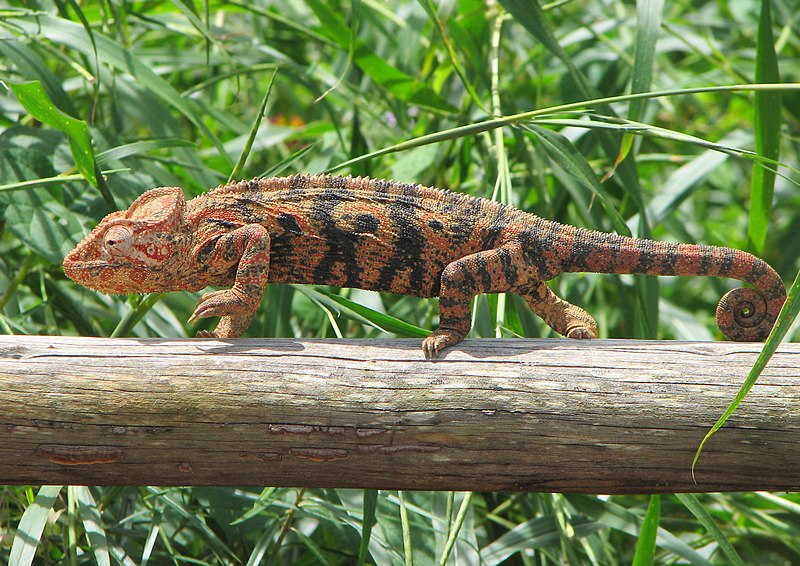The Saltwater or Estuarine Crocodile, Crocodylus porosus, is the largest of the world’s reptiles. Until now, the record was held by a 21.1 foot-long male taken in 1974 along the Mary River in Australia’s Northern Territory. This month (September, 2011) an astonishing behemoth was captured alive in the southern Philippines…and it may be the biggest croc ever seen!
Awe-Inspiring Crocs
 Large Saltwater Crocodiles, or “Salties”, awe neophyte and veteran herpetologists equally when viewed up close. There is simply no way to prepare oneself for the grandeur of these other-worldly beasts. I had worked with hundreds of large crocs before meeting my first true monster – a 17-foot-long, 1,700 pound brute christened “Gomek” (please see article below). Accompanied by his keeper, I edged to within a few feet of the usually calm, nutria-eating giant, and I still lack the words to properly describe the experience.
Large Saltwater Crocodiles, or “Salties”, awe neophyte and veteran herpetologists equally when viewed up close. There is simply no way to prepare oneself for the grandeur of these other-worldly beasts. I had worked with hundreds of large crocs before meeting my first true monster – a 17-foot-long, 1,700 pound brute christened “Gomek” (please see article below). Accompanied by his keeper, I edged to within a few feet of the usually calm, nutria-eating giant, and I still lack the words to properly describe the experience.
Well, the individual just captured in the Philippines out-measures Gomek by quite a bit…please see the video below. He frequented the outskirts of a farming town in Bunawan Township, 515 miles southeast of Manila. Circumstances led residents to believe that the animal, whom they have named “Lolong”, may have been responsible for killing several people; domestic water buffaloes were also on his menu.
Catching a Legend
The giant destroyed 4 traps and eluded capture for 3 weeks; a stronger, re-built trap finally snared him. After several escapes from ropes that sought to restrain him (not an easy task, even with much smaller animals, I can assure you!) Lolong was pulled from the water…a feat that took the efforts of 90-100 people!
The new heavyweight contender is currently listed as being 21 feet long and weighing an amazing 2,370 pounds. The Mary River individual mentioned earlier measured at least 21 feet long (there is some uncertainty). I’m anxious to hear if 21 feet is a rough measurement…if so, we may have a new record.
Unfortunately, giant crocodiles and people do not mix, so this fellow cannot be released. An exhibit in a local ecotourism park is expected to be his new home.
Natural History
Saltwater Crocs occupy an enormous range that stretches from northern India southeast through China and Thailand to Australia. Ocean journeys of over 600 miles have been documented, and they sometimes wind up well beyond their normal haunts (i.e. Japan); some particularly seaworthy specimens even sport barnacles!
An Extinct Giant
Salties are not the largest crocs to have ever lived. Deinosuchus, a 29-foot-long crocodile that once roamed Florida, preyed upon dinosaurs! Please see this article.
Gomek’s Story
 Gomek was captured on New Guinea’s Fly River and eventually found a home with Arthur Jones. Mr. Jones, best known for inventing Nautalis weight-lifting equipment, was quite the animal fancier. At one point he had scores of adult crocs and a herd of 20+ African Elephants on his land in Florida. Years in the zoo field and friendship with a protégé of his have favored me with a few peeks into his most unique life…but those are stories for another time. For now, please check out the Gomek article below.
Gomek was captured on New Guinea’s Fly River and eventually found a home with Arthur Jones. Mr. Jones, best known for inventing Nautalis weight-lifting equipment, was quite the animal fancier. At one point he had scores of adult crocs and a herd of 20+ African Elephants on his land in Florida. Years in the zoo field and friendship with a protégé of his have favored me with a few peeks into his most unique life…but those are stories for another time. For now, please check out the Gomek article below.
Further Reading
Saltwater Crocodile Natural History
Photos and a video of the giant captured this month here
My Visit with Gomek World’s Largest Captive Croc
Check out this video of a giant croc feeding –
feeding a giant croc
Crocodile images referenced from Wikipedia.
 That Reptile Blog – Reptile, Amphibian and Exotic Pet Care and Information
That Reptile Blog – Reptile, Amphibian and Exotic Pet Care and Information



